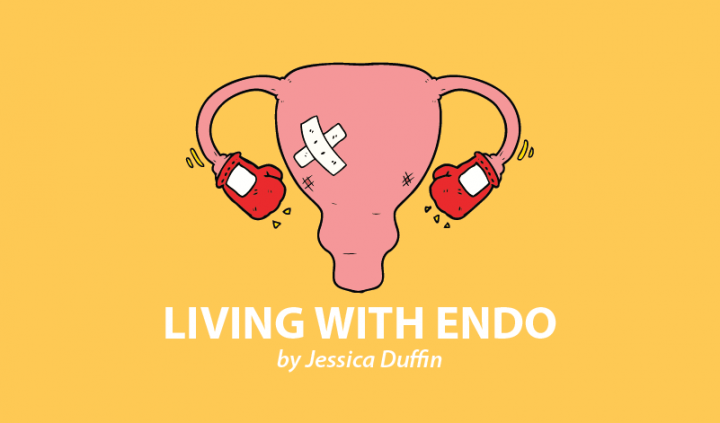Inflammation. If you have endometriosis, chances are you’ve heard a lot about it, and rightly so.
Endometriosis is an inflammatory disease that continuously upregulates inflammation in the body, sometimes until it reaches a chronically inflamed state.
But the problem isn’t inflammation itself, which is essential for our survival. It’s a normal immune response that protects the body and aids healing in times of threat, injury, or illness. Inflammation is what you can see happening and can feel as a result of a wound. The area swells and turns red, and you may even feel pain as the inflammation triggers a pain response from the brain to alert you to the problem.
That’s all very natural and temporary. Once the immune system has fulfilled its duty of healing you, the inflammation goes away. The problem occurs when we have too much of it and are continuously inflamed — that’s when health issues arise.
What is prostaglandin E2?
Prostaglandin E2 (PGE2) is a hormone-like fatty acid involved in the inflammation response. PGE2 is released locally at the site of a wound or infection, illness, etc. It helps to inflame the area, promote healing, trigger the pain response, and protect your body from invaders. It’s also involved in the clotting of blood and regulation of blood flow so that wounds heal properly and we don’t lose too much blood!
Prostaglandin E2 and the anti-inflammatory prostaglandin E1 work together and should be in balance for optimal health, but often our stress and diet can trigger an overproduction of the inflammatory prostaglandin E2. A study suggests a diet rich in omega-6 and low in omega-3 could trigger an overproduction of this inflammatory lipid: PGE2 is converted from omega-6 and PGE1 is converted from omega-3.
How is PGE2 related to the menstrual cycle?
As I mentioned, prostaglandin E2 isn’t all bad. Without it, we’d all be in some serious trouble whenever we got injured or unwell! But that’s not the only function that PGE2 performs.
PGE2 is also released during labor, ovulation, and menstruation. The lipid helps to create contractions, helps the uterine lining to shed, and aids in ovulation.
But as we know, this inflammatory compound causes swelling and pain. So, if we have too much of it, we get very painful ovulation and often excruciating periods.
How does PGE2 impact endometriosis?
Unfortunately, prostaglandin E2 plays a starring role in the development and continued growth of endometriosis.
For a start, we have this continuous overproduction of PGE2 between the endo lesions and the body. The endo lesions themselves actually release PGE2 and the presence of endo triggers an immune response in the pelvic cavity, making even more PGE2 in an attempt to heal the area.
This creates an abundant amount of PGE2 to spur on the progress of endo.
Firstly, PGE2 triggers the production of estrogen in the local area. Estrogen has been shown in multiple studies to also encourage endometriosis growth. PGE2 also helps those endometriosis cells to survive. All cells die as part of the normal cell life cycle and the process of cell death is called apoptosis, but unfortunately, PGE2 actually helps to prevent apoptosis in endo cells. So yes, basically, we have immortal endo cells!
Next up, PGE2 also helps to accelerate endo cell growth by promoting cell proliferation. This is that process you may remember watching in a high school science video, where cells divide to make more cells.
And finally, while endometriosis isn’t a parasite, you could argue that it feeds off us in a similar way. PGE2 aids the formation of new blood vessels to the endometriosis lesions so the endo can get the blood supply it needs to continue growing.
The result is, of course, that we have endo lesions releasing PGE2, our body releasing PGE2 in response, and then come ovulation and our periods. More PGE2 is released as a part of that natural process. This large accumulation of inflammation ends up causing us chronic pain or extreme pain come certain points in our cycle. Eventually the constant triggering of our immune response results in full-body inflammation, which can cause brain fog, fatigue, aches and pains, and so much more.
So how do we counteract the levels of PGE2? By calming down the body with an anti-inflammatory lifestyle and nutrition, which is the backbone of most of my work as an endometriosis health coach. I really recommend listening to this podcast and this podcast to get started with your own anti-inflammatory journey.
***
Note: Endometriosis News is strictly a news and information website about the disease. It does not provide medical advice, diagnosis, or treatment. This content is not intended to be a substitute for professional medical advice, diagnosis, or treatment. Always seek the advice of your physician or other qualified health provider with any questions you may have regarding a medical condition. Never disregard professional medical advice or delay in seeking it because of something you have read on this website. The opinions expressed in this column are not those of Endometriosis News or its parent company, BioNews, and are intended to spark discussion about issues pertaining to endometriosis.

